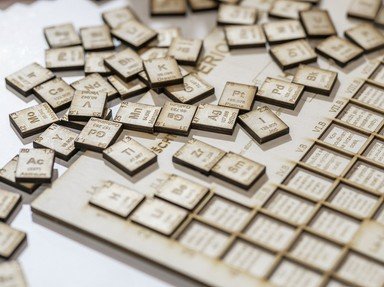Quiz Answer Key and Fun Facts
1. What is the element symbol for tin?
2. Tin is an element occurring in nature, and is extracted from various ores. One way of obtaining these ores is through mining. Which English county was once the home of several tin mines? (Hint: a traditional snack for tin miners was a meat-and-veg pasty!)
3. In the UK, when we think of tin, we think of cans of food, such as a tin of baked beans. Why was tin initially chosen as a material for canning food?
4. Tin has been used by humans for thousands of years, as far back as the Bronze Age.
5. When you bend tin, it makes a sound. What is this sound commonly known as?
6. Which malleable alloy, used to make decorative objects, jewellery and figurines, is primarily made up of tin (in the region of 85-99%)?
7. Tin can become brittle at low temperatures, and even turn into powder. What is the name of the phenomenon that causes this process?
8. Which oxide mineral, found in places such as Rwanda and Bolivia, is the ore most commonly used for tin extraction?
9. Tin has two principal forms, or allotropes, known as grey and white tin. By which name are these two allotropes also known?
10. Molten tin is a popular choice of metal for the Pilkington process, which is used to manufacture which kind of product?
Source: Author
Kankurette
This quiz was reviewed by FunTrivia editor
rossian before going online.
Any errors found in FunTrivia content are routinely corrected through our feedback system.

